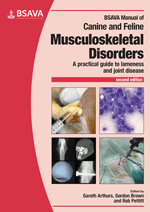
Full text loading...

Neurological conditions can mimic orthopaedic disorders and lead to lameness as the main clinical sign, commonly described using the terms paresis, plegia or ataxia. This chapter covers neurological examination, diagnostic procedures, traumatic nerve injury, vascular disease, degenerative disease, inflammatory diseases, neoplasia, neurological conditions caused by toxins and intermittent lameness.
Neurological causes of lameness, Page 1 of 1
< Previous page | Next page > /docserver/preview/fulltext/10.22233/9781910443286/9781910443286.12-1.gif

Full text loading...




























